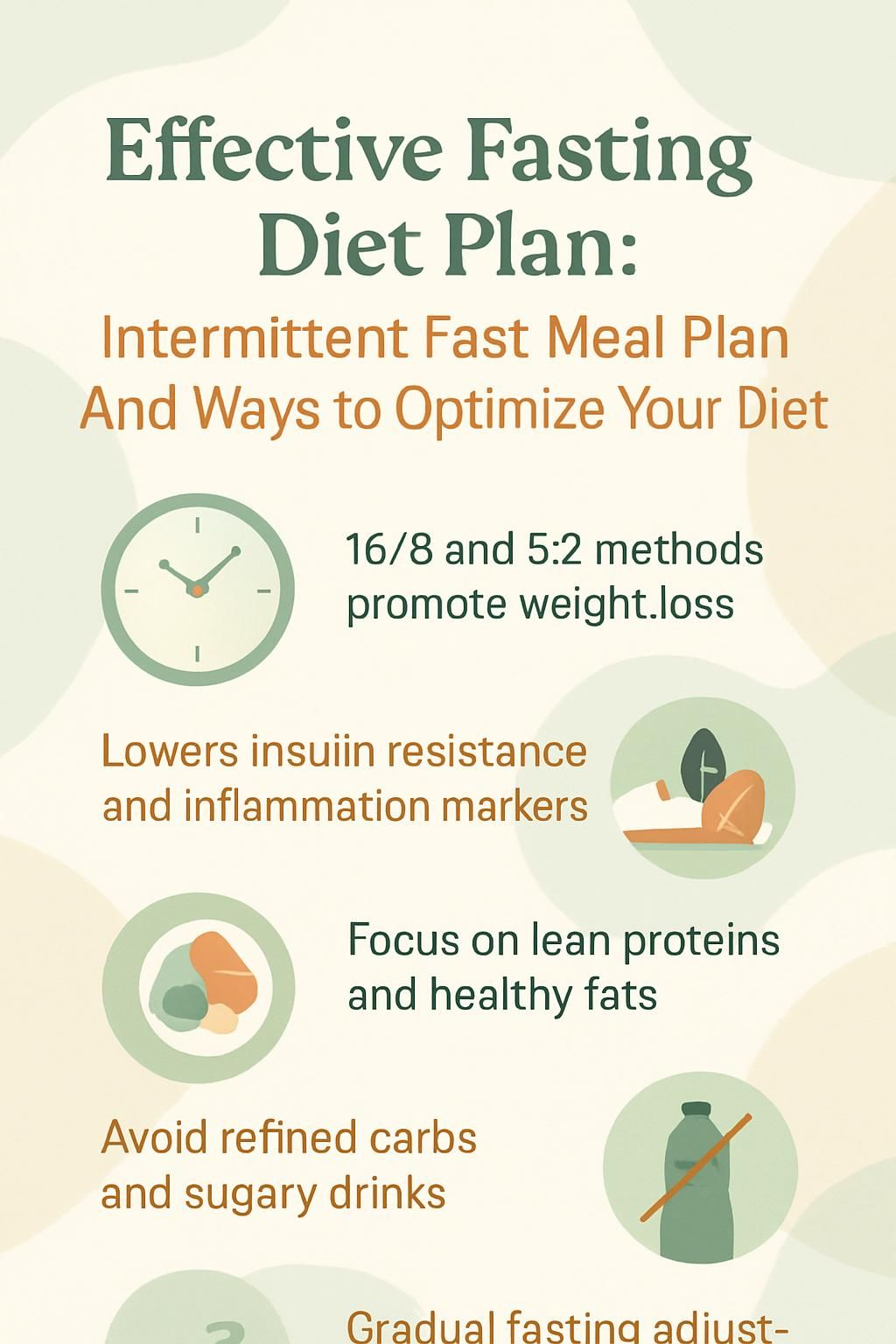Effective Fasting Diet Plan: Intermittent Fast Meal Plan And Ways To Optimize Your Diet
Our Nutrition Assistant AI Suite will transform your body. You will lose fat, get toned, and build muscle. Gain confidence and optimal health.
If you want a simple way to manage weight and build a healthy diet, an intermittent fast can help. Research suggests intermittent fasting may support weight loss and improve metabolic health for many adults. This guide shows clear ways to do intermittent fasting, a sample meal plan, and practical tips to optimize your eating pattern for steady results. Use this step-by-step approach to match your schedule, support your metabolism, and keep your energy stable. Small changes add up over time, and you can adjust the plan to fit your life.
Key Takeaways

What is Intermittent Fasting?
Popular Intermittent Fasting Methods
Benefits of Intermittent Fasting
Meal Plan for a 16/8 Intermittent Fasting Diet
Foods to Focus on While Intermittent Fasting
Foods to Avoid During Intermittent Fasting
Tips for Optimizing Your Intermittent Fasting Diet
Potential Drawbacks and Risks of Intermittent Fasting
Is Intermittent Fasting Right for You?
Conclusion
FAQs
1. What is intermittent fasting and how does it work in a diet plan?
Intermittent fasting involves cycling between periods of eating and not eating. This approach helps regulate calorie intake, supports weight management, and may improve metabolic health according to several clinical studies.
2. How can I create an effective intermittent fast meal plan?
An effective intermittent fast meal plan includes balanced meals with lean protein, whole grains, fruits, and vegetables during eating windows. Planning ahead ensures you meet your nutritional needs while following the intermittent fasting schedule.
3. Are there proven benefits to using an intermittent fasting diet for health optimization?
Research shows that intermittent fasting can help reduce body fat percentage, lower blood sugar levels, and support heart health when combined with nutritious foods. These effects have been observed in both short-term trials and longer studies published in peer-reviewed journals.
4. Can personal experience help optimize my own intermittent fast meal plan?
Tracking your energy levels and hunger patterns during different fasting schedules allows you to adjust your meal timing for better results. For example, after trying various approaches myself over three months, I found that starting my first meal at noon helped me stay focused throughout the day without feeling deprived.
Summary: Intermittent fasting uses structured eating times to manage calories and promote wellness; evidence supports its role in improving metabolic markers when paired with healthy food choices; personal tracking enhances individual success on this diet plan.






